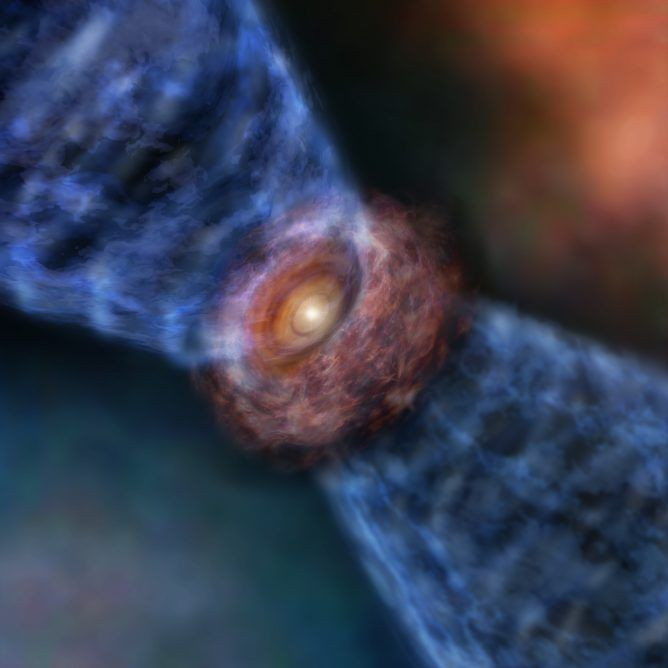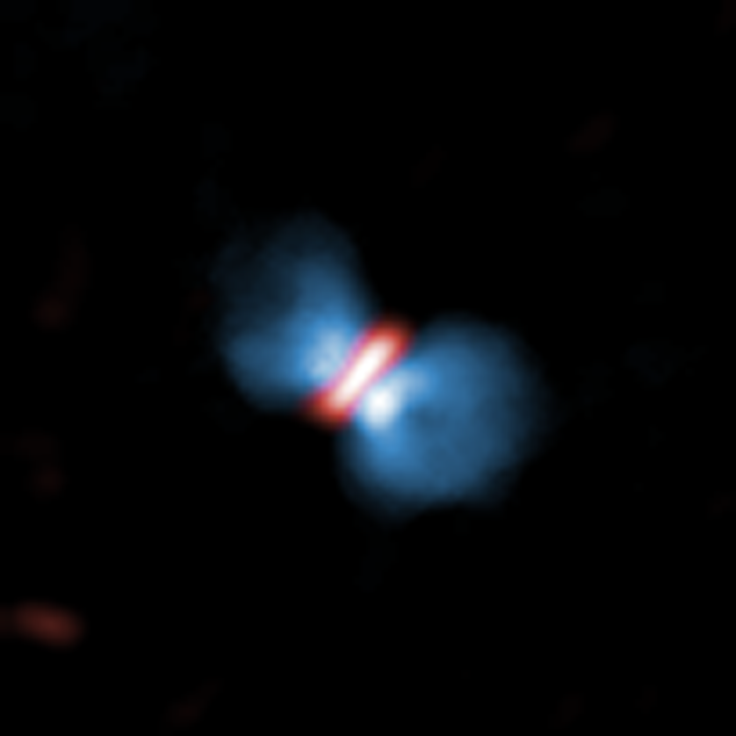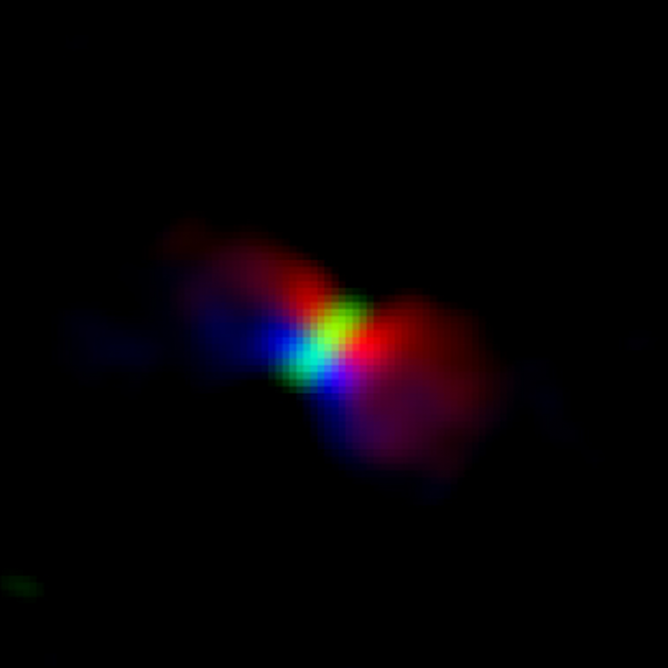ALMA Finds Massive Stars Can Spin Slowly Because Gas Flow During Birth Takes Away Rotational Momentum

When it comes to massive stars in space, the theories of formation suggest interstellar gas and dust come together and accrete. But that theory could not account for the fact that as the stars’ parent clouds shrink under their own gravity, they start to spin much faster, while massive stars observed in the universe rotate comparatively slowly.
That inconsistency could be resolved with observations made by an international team of researchers who used the Atacama Large Millimeter/submillimeter Array (ALMA) in Chile, training the radio telescope on a massive baby star called Orion KL Source I. This protostar is located about 1,400 light-years away in the Orion Nebula, and has a gas outflow that the researchers said was responsible for carrying away the star’s rotational energy.
ALMA observations showed the gas outflow rotates in the same direction as the gas disk that surrounds the young star, supporting the idea that the outflow contributes significantly to the dissipation of rotational momentum.
Read: ALMA Spots Explosive Star Formation 1,350 Light-Years Away
Tomoya Hirota, an assistant professor at the National Astronomical Observatory of Japan (NAOJ) and SOKENDAI (the Graduate University for Advanced Studies), led the team and was the lead author of a paper published Monday in the journal Nature Astronomy. In a statement, he said: “We have clearly imaged the rotation of the outflow. In addition, the result gives us important insight into the launching mechanism of the outflow.”
The launch of the outflow is not from regions adjacent to the star, but instead, it happens from the outer edges of the gas disk surrounding the star. This behavior is in line with the “magnetocentrifugal disk wind model” which says gas in the rotating disk around a protostar is pushed outward by the centrifugal force and that it moves upward along lines of the star’s magnetic field.

This was the first time evidence has been found for this theory around a massive star, though ALMA has previously observed this phenomenon for smaller, low-mass protostars. This was partially because most massive-star-forming regions in the universe are distant from Earth and therefore difficult to observe. But the Orion Nebula is the closest such region from where we are, and ALMA’s capabilities allowed for the young star in it to be observed.

“In addition to high sensitivity and fidelity, high resolution submillimeter-wave observation is essential to our study, which ALMA made possible for the first time. Submillimeter waves are a unique diagnostic tool for the dense innermost region of the outflow, and at that exact place we detected the rotation. ALMA’s resolution will become even higher in the future. We would like to observe other objects to improve our understanding of the launching mechanism of outflows and the formation scenario of massive stars with the assistance of theoretical research,” Hirota explained.
The paper published by the researchers is titled “Disk-driven rotating bipolar outflow in Orion Source I.” It said the outflow and jets from the protostar travel to a distance of over 10 AU (1 AU is the distance between Earth and the sun), at a speed of about 10 kilometers (6.2 miles) per second.
ALMA, in the Chilean desert, is operated by European Southern Observatory.
© Copyright IBTimes 2024. All rights reserved.





















